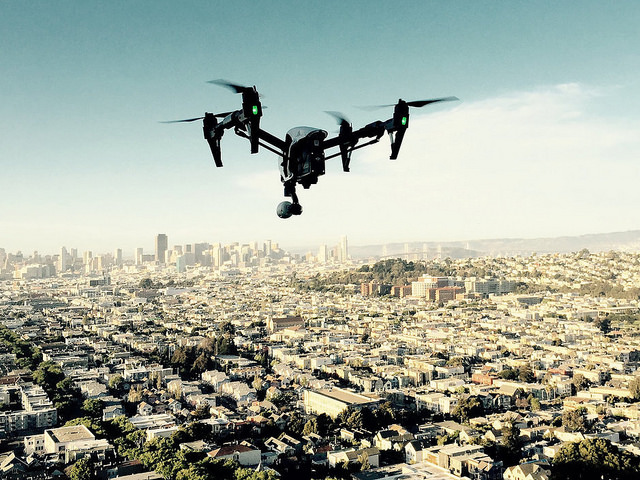by Glen Whelan.
A Military Heritage
A drone is an unmanned aircraft. Long used to refer to male honeybees – whose main function is to fertilize a receptive queen bee (and then die a seemingly horrific death) – the word was first used to refer to remote-controlled aircraft by the US Navy back in the 1930s. The word was chosen as a homage to ‘the Queen Bee’, a remote-control aircraft that the Royal Navy demonstrated to the US Navy, and that inspired the US Navy to develop similar aircraft.
In the 1990s, the word drone was being used as a verb to describe the act of turning a piloted aircraft into an unpiloted one.[i] And by 2009, the word drone was being used to describe the act of remotely killing someone. As Fattima Bhutto wrote in 2009:
“Droned” is a verb we use now in Pakistan. It turns out, interestingly enough, that those US predator drones that have been killing Pakistani citizens almost weekly have been taking off from and landing within our own country. Secret airbases in Balochistan – what did we ever do before Google Earth? [ii]
Various Civilian Uses
With the development of consumer market autonomous drones[iii] that can be told to follow yourself or another person, it seems that the word ‘droned’, or ‘droning’, is soon to be used more regularly. Rather than just being used to describe acts of murder (or defense), however, it seems it will be used to refer to the act of being filmed or recorded by (autonomous) flying devices more generally.
Such filming will clearly be a good thing for legitimate film-making. And there are possibilities for autonomous drones to be used to improve accountability: as a form of sousveillance in response to surveillance by the powerful. But drones have other uses as well. Indeed, there are already numerous cases of drones being used for stalking around the world. Late last year for example, it was reported that:
“A group of women living in a rural setting near Port Lincoln on South Australia’s Eyre Peninsula have been woken at night by a drone looking into their home…. One of the women, who like the rest of the group did not want to be identified, was asleep and alone at home on her relatively remote hobby farm. She was woken by a bang on her bedroom window and when she looked out into the darkness was confronted by a camera attached to a drone, hovering within centimetres of her window”.
Technologically Changing Society
Whilst such reports are alarming, Nick Bilton[iv] has used a personal anecdote to suggest that the negatives of being droned could be overstated. As he writes:
“I was sitting in my home office, working on this very column about neighbours getting into arguments over drones, when I heard a strange buzzing sound outside. I looked up and hovering 20 feet (around 6 metres) from my window was a black drone with a beady-eyed camera pointed at me.
At first, I was upset and felt spied upon. But the more I thought about it, the more I came to the opposite conclusion. Maybe it’s because I’ve become inured to the reality of being monitored 24/7, whether it’s through surveillance cameras or Internet browsers. I see little difference between a drone hovering near my window, and someone standing across the street with a pair of binoculars. Both can peer into my office.”
Whether or not the majority of people would agree, or disagree, with Bilton’s sentiment, is well beyond the present piece. But what should be noted with regard to it, is that he seems to be correct to emphasize that droning will have a material impact on what we deem (un)acceptable. Thus, as more and more people get droned – and as the capacity to make more sophisticated autonomous drones gathers pace – we should expect social norms and practices regarding privacy and personal (air) space to change as well.
Glen Whelan teaches at McGill, is a Visiting Scholar at York University’s Schulich School of Business, and the social media editor for the Journal of Business Ethics. He was GRB Fellow at CBS in 2016/2017. His research focuses on the moral and political influence of corporations, and high-tech corporations in particular. He is on twitter @grwhelan.
Links
[i] Zimmmer, B. 2013. The flight of ‘drone’ from bees to planes. The Wall Street Journal, July 26. https://www.wsj.com/articles/SB10001424127887324110404578625803736954968
[ii] Bhutto, F. 2009. Missing you already. New Statesman, March 12. https://www.newstatesman.com/asia/2009/03/pakistan-war-government-terror
[iv] Bilton, N. 2016. When your neighbor’s drone pays an unwelome visit. The New York Times, January 27. https://www.nytimes.com/2016/01/28/style/neighbors-drones-invade-privacy.html
Pic by Cambodia, P.I. Networt, Flickr. No changes made.
